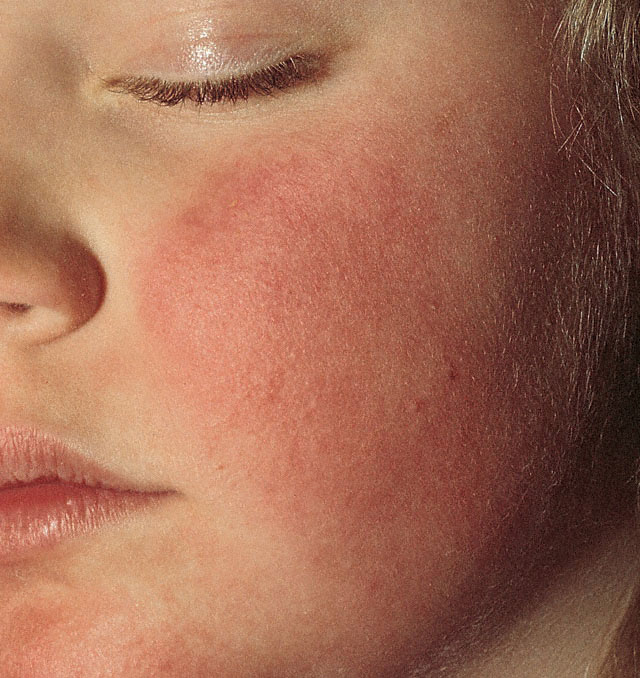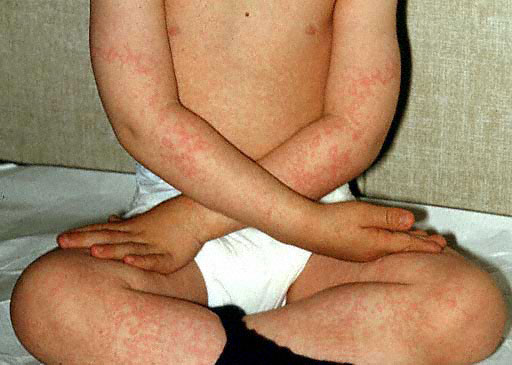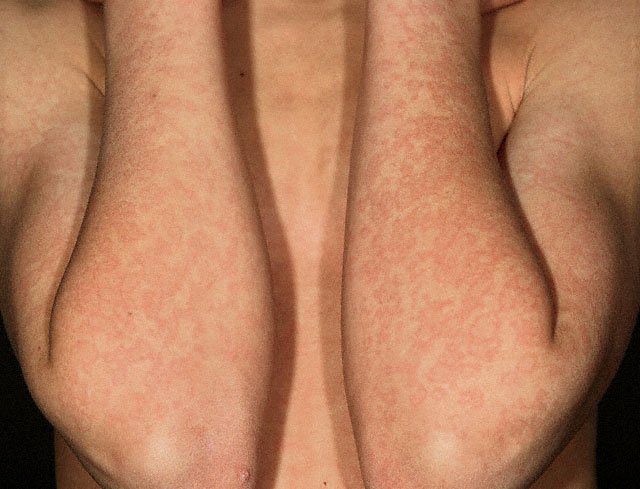Fifth Disease (Parvovirus
B19)
Fifth disease is a mild
rash illness that occurs most commonly in children. The ill child typically
has a "slapped-cheek" rash on the face and a lacy red rash on the
trunk and limbs. Occasionally, the rash may itch but very mildly. A child may
rarely have a
low-grade fever, malaise, or a "cold" a few days before the rash
breaks out. The child is usually not very ill, and the rash resolves in 7 to
10 days. It really has a name called "Erythema Contagiosum" but we
call it the Fifth Disease because it was the fifth rash disease described in
children.
Fifth disease is caused
by infection with human parvovirus B19. This virus infects only humans and
does not come from animals.
An adult
who is not immune can be infected with parvovirus B19 and either have no
symptoms or develop the typical rash of fifth disease, joint pain or swelling,
or both. Usually, joints on both sides of the body are affected.
A person infected
with parvovirus B19 is contagious during the early part of the illness, before
the rash appears. By the time a child has the characteristic "slapped
cheek" rash of fifth disease, for example, he or she is probably no
longer contagious and may return to school or child care center.
During outbreaks of
fifth disease, about 20% of adults and children who are infected with
parvovirus B19 do not develop any symptoms.
Fifth disease is usually
a mild illness that resolves on its own among children and adults who are
otherwise healthy. Joint pain and swelling in adults usually resolve without
long-term disability.
Parvovirus B19 infection
may cause a serious illness in persons with sickle-cell disease or similar
types of chronic anemia. Occasionally, serious
complications may develop from parvovirus B19 infection during pregnancy. For
details, please see the CDC information sheet entitled, "Parvovirus B19
Infection and Pregnancy."
Treatment is mainly the
treatment of symptoms. Since the virus is gone when the rash occurs, there
are not very severe symptoms and most children do not take any medications.
Since they are not contagious, they are sent back to school.


